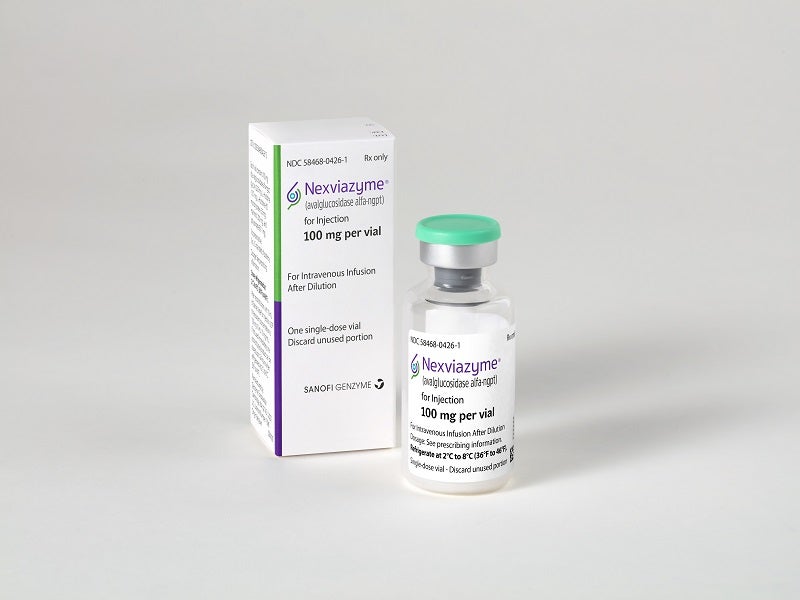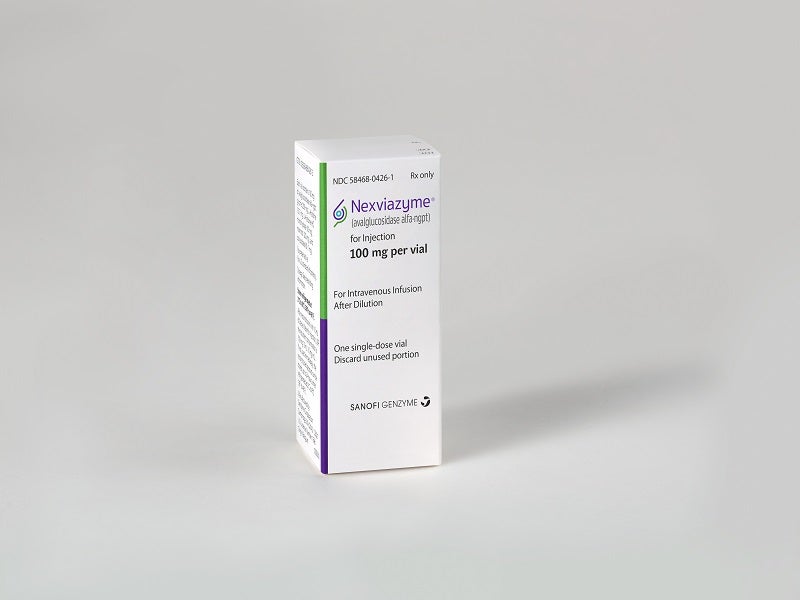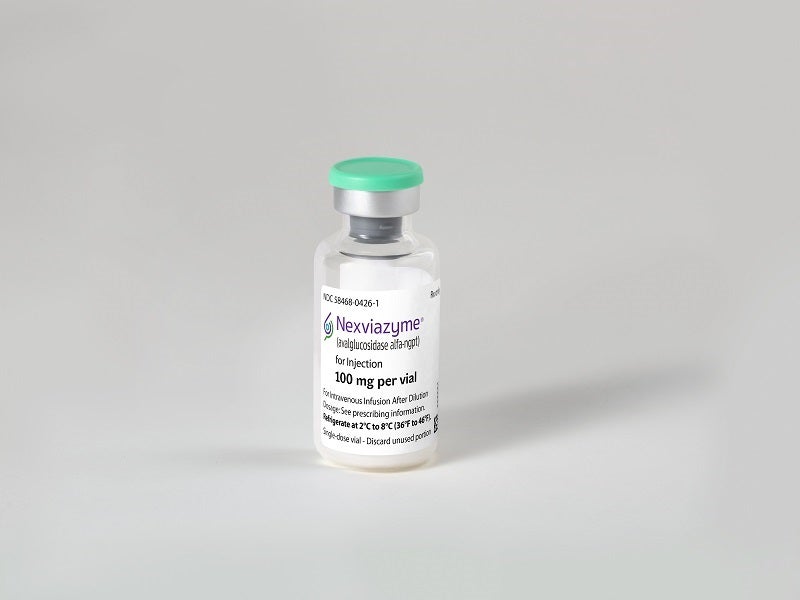Nexviazyme® (avalglucosidase alfa-ngpt) is an enzyme replacement therapy (ERT) indicated for the treatment of late-onset Pompe disease (LOPD) in patients aged one year and older.
Developed by US-based biotechnology company Sanofi Genzyme, Nexviazyme is the company’s second therapeutic drug for Pompe disease. In 2006, the US Food and Drug Administration (FDA) approved Myozyme (alglucosidase alfa) for the treatment of infantile-onset Pompe disease (IOPD). This therapy was later commercialised as Lumizyme (alglucosidase alfa) for LOPD in 2010 and the label expanded to IOPD in 2014.
Nexviazyme is available as a sterile white to pale-yellow lyophilised powder in a single-dose vial for reconstitution before intravenous infusion.
Regulatory approvals for Nexviazyme
In October 2020, the European Medicines Agency (EMA) accepted avalglucosidase alfa’s marketing authorisation application (MAA) for review. The US FDA accepted a biologics license application (BLA) for the drug for priority review in November 2020.
Nexviazyme (avalglucosidase alfa-ngpt) received FDA approval for the treatment of late-onset Pompe disease in August 2021.
The drug also holds FDA fast track and breakthrough therapy designations. The UK’s Medicines and Healthcare Products Regulatory Agency (MHRA) granted Promising Innovative Medicine designation to the drug, signifying its potential as an investigational therapy to be included in the country’s Early Access to Medicines Scheme.
Pompe disease (LOPD) causes and symptoms
Pompe disease is a rare neuromuscular disorder with a range of onset ages, symptoms and progression rates. It is a debilitating and progressive disease that greatly restricts mobility and breathing, resulting in premature death.
The disease is characterised by a genetic deficit or impairment of the lysosomal enzyme acid alpha-glucosidase (GAA), which causes complex sugars (glycogen) to accumulate in muscle cells throughout the body.
Glycogen build-up leads to irreversible muscle damage, including the diaphragm, which supports respiratory function, and skeletal muscles, thereby impairing movement, functional endurance and breathing.
Pompe disease affects an estimated 3,500 individuals in the US and can be categorised into two types, namely IOPD and LOPD.
IOPD is the most severe type and primarily affects infants, whereas LOPD gradually destroys muscles over time. The symptoms of LOPD can appear at any age. People with LOPD may require artificial ventilation to assist in breathing or a wheelchair for movement as the disease progresses.
Nexviazyme’s mechanism of action
Nexviazyme specifically targets the mannose-6-phosphate (M6P) receptor, which plays a key role in transporting the GAA enzyme into the muscle cell lysosomes for its clearance in target tissues.
The drug improves cellular enzyme uptake and increases glycogen clearance in target tissues. Avalglucosidase alfa is designed with around 15 times more M6P content than alglucosidase alfa.
Clinical trials on Nexviazyme
Nexviazyme’s efficacy in treating LOPD was evaluated in COMET, a double-blind, 49-week, comparator-controlled, pivotal Phase III clinical trial.
In the clinical trial, 100 previously untreated LOPD patients were randomly assigned to receive Nexviazyme or another FDA-approved ERT for Pompe disease, alglucosidase alfa.
The study’s primary endpoint was the change in the percentage of forced vital capacity (FVC), used to evaluate the lung function, from baseline to week 49. Nexviazyme showed a 2.9 point improvement in FVC per cent predicted at week 49 versus baseline.
Nexviazyme improved respiratory function and walking distance in individuals with LOPD, establishing its safety profile.
The trial’s secondary measure outcome was a six-minute walk test to assess functional endurance. Patients treated with Nexviazyme walked 30m farther than those treated with alglucosidase alfa at week 49.
Serious adverse reactions were observed in 2% of the patients treated with Nexviazyme and 6% of the alglucosidase alfa-treated patients during the 49-week active-controlled trial.
The most frequent side effects reported in the patients during the trial were headache, fatigue, diarrhoea, nausea, joint pain, dizziness, myalgia, itching, vomiting, dyspnoea, skin redness, paraesthaesia and urticaria.










